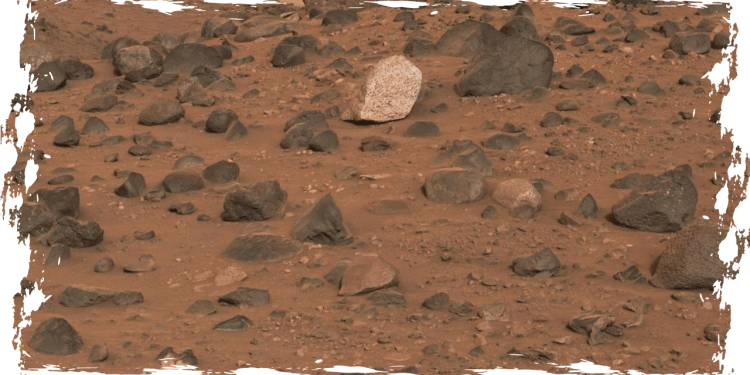During its mission to investigate the Jezero crater on Mars and unravel the mystery of potential life on the planet, NASA’s Perseverance rover made a groundbreaking discovery. Recently, the rover stumbled upon a peculiar light-toned boulder, which is the first of its kind ever found on the Martian surface. This unprecedented finding has created excitement among scientists and researchers, and it could provide valuable insights into the past existence of life on Mars.
NASA reported that during its exploration of the Neretva Vallis, a dried river delta that emptied into the crater eons ago, the Perseverance rover came across a large boulder. The rover was en route to an area within the rim where rocky outcrops are being studied to uncover sediment that could provide insight into the history of Mars. While traversing the terrain, the rover altered its course to avoid rough areas and, while taking a shortcut through a dune field, reached a hill that has been nicknamed Mount Washburn by the scientific team.
NASA has described the hill on Mars as being covered with boulders, including a type that has never been observed before on the planet.
As the Perseverance rover made its way across the hill, scientists were captivated by a small boulder that caught their attention. This rock, measuring around 18 inches across and 14 inches tall, stood out from the rest of the darker boulders due to its distinctive speckled and light-toned appearance. Despite its relatively small size, this boulder piqued the interest of the scientists working on the mission.
During the current Perseverance mission, the team was amazed by the diverse textures and compositions found at Mount Washburn. According to Brad Garczynski of Western Washington University, who is co-leading the mission, the rocks discovered at the site are a mixture of geological treasures that have been brought down from the crater rim and possibly beyond. He stated that one particular rock stood out among the rest.
The enigmatic boulder discovered by Garczynski and his team was affectionately dubbed Atoko Point. Upon closer inspection using the rover’s instruments, it was revealed that the rock was made up of pyroxene and feldspar minerals. According to NASA, Atoko Point’s size, shape, and mineral composition, along with its potential chemical makeup, make it stand out among Martian sediment and put it “in a league of its own,” at least compared to other rocks known to scientists.
According to NASA and the U.S. Geological Survey, pyroxene and feldspar minerals are present in both the Earth’s crust and on the moon. The Perseverance team has suggested that the minerals discovered at Atoko Point may have originated from magma beneath the Martian surface and were subsequently exposed on the Jezero crater rim due to erosion.
According to the team, the positioning of the boulder on Washburn Hill seemed unusual, leading them to speculate that it may have originated from a different location on Mars and traveled with an ancient river channel to its current position on the rim. However, NASA clarified that the entire team of Perseverance scientists is confident that there are other rocks on Mars with a similar composition.
During its fourth mission on Mars, the rover stumbled upon Atoko Point while searching for proof of carbonate and olivine deposits within the Jezero crater’s interior. These minerals are commonly found on Earth, with carbonate typically located near lake shores and olivine associated with volcanic activity.
Scientists studying Mars have a keen interest in two minerals that have already been observed by Perseverance: carbonate and olivine. These minerals have the ability to preserve remnants of the past for extended periods of time. If carbonate is identified in the Martian crater, it could potentially provide scientists with access to traces of ancient life on the planet that are preserved within the mineral. On the other hand, olivine helps scientists determine the historical period when the Martian climate may have been favorable for organic compounds, such as flowing water, and even the possibility of life.
According to scientists, gaining knowledge about the composition of Mars and its past conditions can aid in determining the potential habitability of its current environment for humans. Additionally, this information could provide significant insights into the development and progression of life on Earth.










